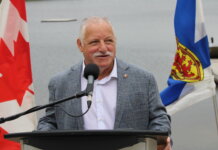The following was submitted to us by IRPP
MONTREAL, QUE.: Canada is in the midst of a severe housing crisis.
The federal government has unveiled two major housing initiatives in recent years, but neither has adequately targeted the “deeply affordable housing” needed to address homelessness and reduce core housing need among very-low- and low-income households.
According to new IRPP research, delivering on “deeply affordable housing” is achievable, but only by taking a co-ordinated approach that combines mechanisms available to all levels of government.
“It’s what I call the loaded nacho approach,” explains the paper’s author, housing expert Carolyn Whitzman.
“Each level of government needs to add its own ingredients to the mix to ensure success.”
ADVERTISEMENT:
In her paper, Whitzman proposes a three-pronged approach:
The federal government should provide land leases, long-term low-rate infrastructure financing and start-up grants.
Provincial and territorial governments should offer land leases, rent subsidies and services for supportive housing.
Municipal governments should offer land leases, rapid approvals and other zoning reforms such as exemptions to development charges and property taxes for affordable and deeply affordable housing.
ADVERTISEMENT:
In addition, Whitzman calls for the use of clear and consistent income-based definitions of “affordable” and “deeply affordable” housing.
This would allow governments to set clear priorities and would permit a stacking of government grants while enabling the monitoring of results against set targets.
“We have the tools to improve housing affordability for very-low- and low-income Canadians,” said Whitzman.
“Now it’s a matter of using them wisely.”
Download Homeward Bound: How to Create Deeply Affordable Housing by Carolyn Whitzman from the IRPP website, at irpp.org.

























